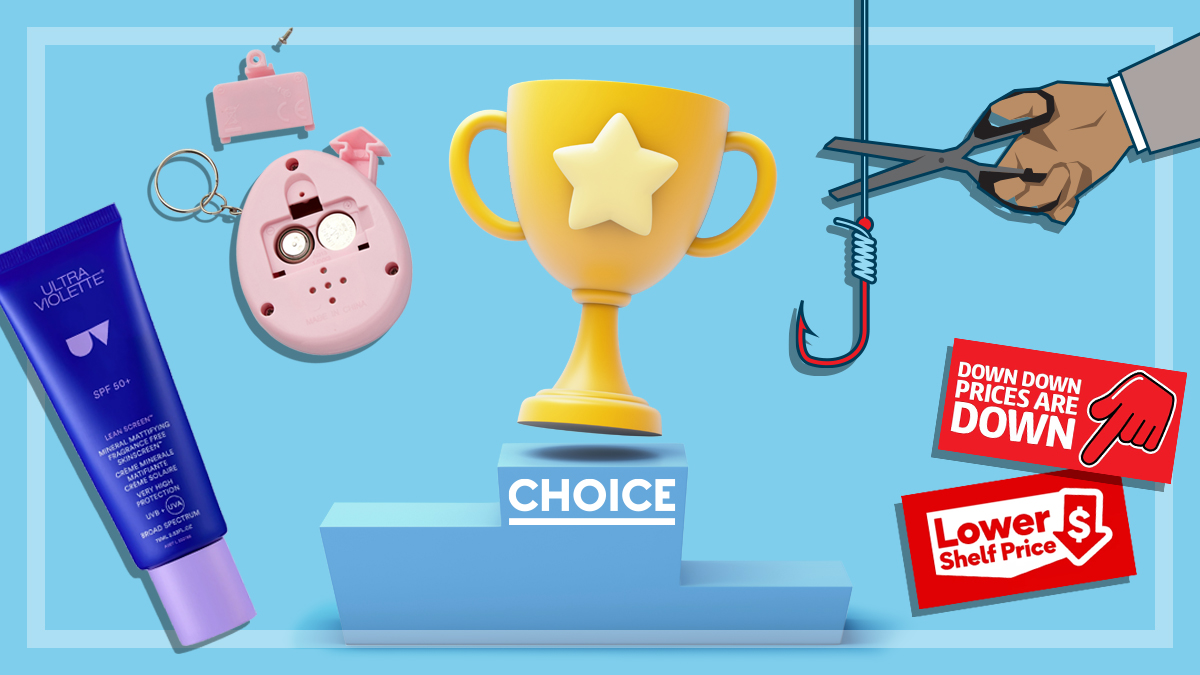Get our independent lab tests, expert reviews and honest advice.
Can we fix it? Building a meaningful right to repair for Australia

How long will my washing machine really last? If my vacuum cleaner breaks, will it be easy to repair? If my smartphone dies, can I take it to any repair store or do I need to wait until the manufacturer can look at it?
When you’re buying a product or when something goes wrong, durability and repairability matter.
At CHOICE, we want a world where it’s easy to find products that last and where the repair process is simple and fair. If we get this right, we’ll end up with better-quality products in our homes with a lower environmental impact.
To achieve this fair repair future, Australian governments have to tackle a few different but connected problems with product design and the repair process.
We need better information when we buy
Australians care about quality and repairs, in part because we all want a good deal on our major purchases, but also because of our growing awareness of the environmental impact of what we buy. Choosing products that last longer or that can more easily be repaired is one way we can reduce our household’s environmental footprint.
In our recent consumer pulse survey, more than eight in ten (85%) people said that buying products that will last a long time is important to them and more than seven in ten (73%) said repairability is important. But people also told us that they’re frustrated. They struggle to get the information they want: nearly four in ten (39%) said they find it difficult to make decisions about environmental factors for products and services.
Is better labelling one answer?
So, how can we figure out if what we’re buying will go the distance? Many people use price or brand as a proxy for durability, assuming that the trusted name or the higher cost means better quality. But as our tests at CHOICE often show, a high price doesn’t guarantee anything. There are plenty of high-cost duds on the market, such as the $3990 Smeg fridge that our experts dubbed the “worst fridge we’ve ever tested”.
Many people use price or brand as a proxy for durability… but as our tests at CHOICE often show, a high price doesn’t guarantee anything
We already have simple labelling schemes to tell us if an appliance uses a lot of water or energy. These labels work because they are consistent, mandatory and clear. You can walk through a retail store and see instantly which products use more energy and water by looking at a star rating. Australians need the same clarity about product durability and repairability.
France recently introduced a law that requires companies to tell people how long spare parts will be available. France is also rolling out a “reparability rating” label for electronic products. This idea could be adapted to Australia. Imagine how much easier it would be to find the right washing machine if you could quickly compare models based on how long they’re meant to last!

Companies need to make repairs easy
Every year at CHOICE we ask thousands of people to tell us about the reliability of their products – we ask our members if they’ve had a problem and, if they did, what the repair process was like.
Digging into this data, we see huge differences in the repair experience between companies. Great repair experiences will make it possible for more people to get a product fixed rather than throw it out and create more waste.
Some companies make it really difficult to get a repair. They have a long assessment process so it takes weeks or months to find out what’s wrong with your product and if they can fix it. This can leave you waiting without access to something essential, like your phone or a laptop. Some companies charge you to send a product to an unknown repair centre, sometimes overseas. Worse, some companies make a habit of refusing repairs altogether.
Some companies doing right by their customers
But other companies have invested in quality customer service and the repairs process. There were a lot of reported problems with stick vacs in our last reliability survey: nearly one in three (31%) respondents said they’d had a performance or reliability problem in the previous 12 months.
It appears that stick vacuum brands have really invested in customer care to make the repair process as smooth as possible
But even though a lot of people had a problem with their vacuum cleaner, the feedback about the repair process from our members was generally positive. It appears that stick vacuum brands – especially Dyson – have really invested in customer care to make the repair process as smooth as possible.
As one person told us in our latest reliability survey: “While no one likes when a new appliance stops working, Dyson offered excellent service and I was able to repair it with promptly mailed parts.”
This is what a good repair process looks like: it’s fast, it comes to you and it’s backed up by great customer service. It’s the standard that every company needs to meet, every time.
Companies have to stop designing products to fail quickly
At CHOICE, our lab tests regularly reveal evidence to suggest that products will fail in a short period of time. We also see products with single-use parts that will create unnecessary waste.
Printers: not impressed
The best example is printers. Nearly one in four (24%) CHOICE members with a printer said they had an issue with performance or reliability in the previous 12 months. CHOICE members who want to get a broken printer repaired tell us they’re instructed by the company to just buy a new model: “I had trouble with the paper feed and the reply from Epson was basically it would cost more to repair than a new one,” said one member.
I had trouble with the paper feed and the reply from Epson was basically it would cost more to repair than a new one
CHOICE member
This is the business model for the printer industry: sell the printers cheaply but keep you paying for expensive ink refills. If the printer breaks, get people to buy another one. This fast-turnover system has a name: planned obsolescence. It’s a tactic companies use to get customers to spend more, more often. It creates unnecessary environmental waste – and a lot of pain for people stuck with a dud printer.
Printer companies double down on poor-quality design by deliberately creating products with unique single-use parts to keep us spending. An $89 printer from the Epson online store, for example, requires at least $57 in total to replace all the ink cartridges – that’s 64% of the cost of the printer itself. Worse, Epson wants to stop other companies from refilling and reselling ink cartridges – they only want you to buy a new “original” model.
Designing for durability
The design problem is tricky. It calls for a lot of different solutions. We need to stop the worst practices, such as companies deliberately designing products that break easily or using intellectual property laws to stop people from refurbishing products. We also need to encourage companies to make products that are easier to repair, for example, by building machines with replaceable parts or external panels that can be easily removed.
Australia playing catch-up
Australia is late to the “right to repair” debate – the US and the EU already have some laws in place to make things easier for consumers. But that means we have a chance to adopt a big-picture solution that covers product design, point-of-sale information, repair processes and intellectual property blockers that stop people getting fair repairs.
Australia needs a new approach to make a “right to repair” a reality.
Find out more
Read about these ideas and more in CHOICE’s submission to the Productivity Commission’s inquiry into a right to repair.
Have you had a good repair experience? Or had trouble getting something fixed? Let us know about it at choice.community.





